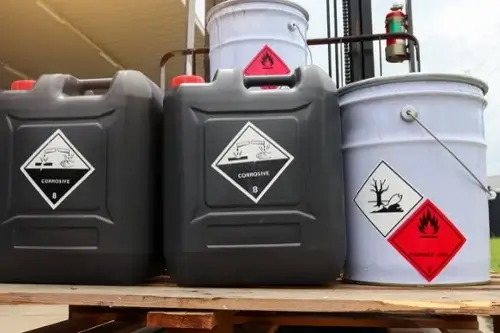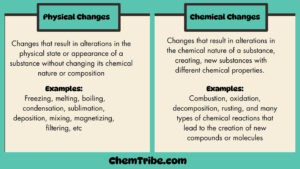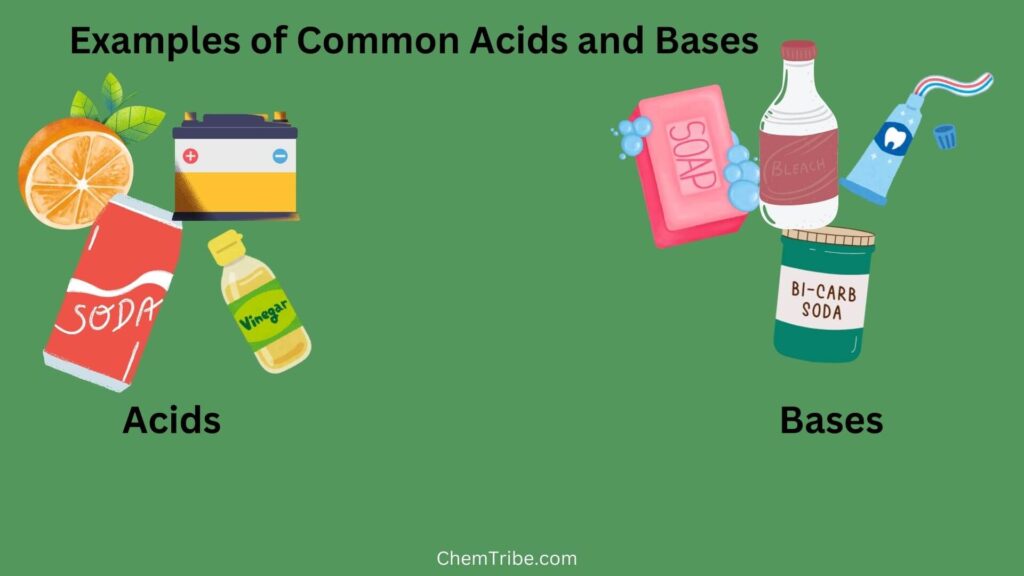We have already learned about the physical properties of acids in this previous post. Let’s now focus on the chemical properties of acids (or how they react with other substances).

1. Reaction of Acids with Metals
Acids react with metals to form a salt and hydrogen gas. Acids contain chemically bound hydrogen, which can be displaced by a reactive metal.
Metal + Acid → Metal salt + Hydrogen
For instance:
Zinc + Hydrochloric acid → Zinc chloride + Hydrogen gas
Magnesium + Hydrochloric acid → Magnesium chloride + Hydrogen gas
Aluminium + Sulphuric acid → Aluminium sulphate + hydrogen gas
Reactive metals such as potassium, sodium, and calcium react violently with acids. Less reactive metals like copper cannot displace hydrogen from dilute acids. As such, copper does not react with dilute acids.
Reactions of some metals with dilute acids slow down and eventually stop due to the formation of insoluble salts. The insoluble salts coat the metals preventing further reaction.
For instance, the reaction of calcium with dilute sulphuric acid slows down and eventually stops due to the formation of insoluble calcium sulphate.
Lead also reacts slowly with sulphuric acid and hydrochloric acid but each reaction eventually stops due to the formation of an insoluble coating of lead sulphate and lead chloride respectively.
2. Reactions of Acids with Carbonates and Hydrogen Carbonates
Acids react with carbonates and hydrogen carbonates to produce salt, water, and carbon (IV) oxide (or carbon dioxide)
Acid + Carbonate → Salt + Water + carbon (IV) Oxide
Acid + Hydrogen carbonate → Salt + Water + carbon (IV) Oxide
For instance:
Sodium carbonate + hydrochloric acid → Sodium chloride + Water + carbon (IV) Oxide
Calcium carbonate + Nitric (V) acid → calcium nitrate +Water + carbon (IV) Oxide
Sodium hydrogen carbonate + hydrochloric acid → Sodium chloride + Water hydrogen carbonate + carbon (IV) Oxide
Like metals, reactions of some carbonates and hydrogen carbonates with dilute acids slows down and eventually stop due to the formation of insoluble salts.
For instance, the reaction between calcium carbonate with sulphuric acid stops after a short while due to the formation of an insoluble layer of calcium sulphate which stops further reaction.
3. Reactions of Acids with Bases
Acids react with bases to form salt and water as the only products. Water and salt are neutral products (they are neither basic nor acidic) hence the reaction is often referred to as Neutralization reaction. This implies that the alkaline properties of bases are canceled by acids. Likewise, the acidic properties of acids are canceled by bases.
For instance:
Sodium hydroxide + hydrochloric acid → Sodium chloride + water
Zinc oxide + hydrochloric acid → Zinc chloride + water
Magnesium + nitric (V) acid → Magnesium nitrate + water
Lead (II) oxide + nitric (V) acid → Lead nitrate + water
Copper (II) oxide + sulphuric (VI) acid → Copper sulphate + water
Practical Applications of Acid-Base Neutralization Reactions
- Soil Neutralization: Farmers often spread slaked lime (calcium hydroxide) in the soil before planting to neutralize soil acidity.
- Neutralization of acids in the mouth: Bacteria in our mouth ferment sugar in our diets into acids. If the acid is not eliminated, it attacks our enamel leading to dental carries disease. Toothpastes are formulated with weak bases to help neutralize acids in the mouth.
- Neutralization of stomach acids: Our stomachs have dilute hydrochloric acid, which aids digestion. Sometimes the acids may be produced in large quantities leading to stomach upset. Antacids are formulated with weak bases like magnesium hydroxide) to help neutralize excess acidity in the stomach, relieving the upset.
- Battery Electrolytes: Lead-acid batteries rely on acid-base neutralization reactions to generate electrical energy. In a lead-acid battery, sulfuric acid (H2SO4) in the electrolyte reacts with lead dioxide (PbO2) and lead (Pb) electrodes to produce lead sulfate (PbSO4) and water. This reaction releases electrons, which flow through the external circuit to produce electric current.
- Metal Cleaning and Surface Treatment: Acid-base neutralization reactions are applied in metal cleaning and surface treatment processes to remove rust, scales, and other contaminants from metal surfaces. Acidic solutions containing compounds like phosphoric acid (H3PO4) or citric acid (C6H8O7) are applied to metal surfaces to dissolve oxides and corrosion products. Alkaline solutions such as sodium hydroxide (NaOH) or potassium hydroxide (KOH) are then used to neutralize residual acids and promote passivation of the metal surface.



